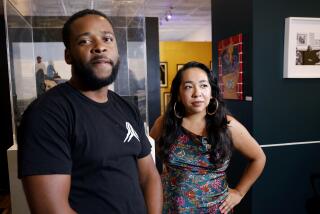NASA Pondering Controlled Suicide Dive for Satellite
CAPE CANAVERAL, Fla. â To avoid the dread of a 17 1/2-ton astronomy satellite tumbling at random out of the sky, NASA is considering sending it on a controlled suicide dive over the Pacific in March.
The 9-year-old Compton Gamma Ray Observatory is still on a scientific par with the newly mended Hubble Space Telescope despite the failure of one of three gyroscopes in December.
But NASA isnât sure whether the Compton Observatory can function in orbit if another gyroscope breaks. And with 1-in-1,000 odds of such a big, out-of-control satellite hurting or killing someone, NASA is loath to take any chances.
So engineers are scrambling to determine, by mid-February, whether Compton can manage with just one gyroscope for pointing.
If one gyroscope is enough, the spacecraft will continue, perhaps for several more years, to collect gamma rays from such hot, violent objects as quasars, pulsars, supernova explosions and the areas surrounding black holes.
If not, ground controllers will use Comptonâs two remaining gyroscopes to guide the observatory down through the atmosphere over an empty stretch of the Pacific sometime around March 14.
Pieces that survive the fiery plunge will rain over an area estimated at 16 miles wide by 964 miles long, says Preston Burch, deputy program manager for space science operations at NASAâs Goddard Space Flight Center in Greenbelt, Md. Ships and planes would be warned to stay away.
Without a controlled reentry, the debris could slam down anywhere between 28.5 degrees north and 28.5 degrees south of the equator. Bangkok, Calcutta, Mexico City, Nairobi, Rio de Janeiro, even Miami would be vulnerable.
âIâm sitting here looking at a map,â says Burch, âand there are vast regions of South America and Africa, the whole northern half of Australia, most of India, a chunk of China and Southeast Asia, Mexico, all of our Central American friends. They sure would not appreciate that.â
NASAâs best calculations put the chance of human casualty at 1 in 1,000 if Compton comes down uncontrolled.
âThose are not good odds, and that really tends to drive you to want to make sure you do the best you can to bring it down in an unpopulated area,â Burch says.
Statisticians have based those numbers, in part, on Skylabâs demise.
The 78-ton Skylab, NASAâs first space station, came crashing down in 1979. Debris fell into the Indian Ocean and onto western Australia, but no one was hurt and nothing was damaged.
It was essentially a free-fall, with only some minor steering possible by ground controllers.
âWe donât need another Skylab,â Burch says with a laugh.
If Compton were to come down on its own, the free-fall would occur three to 11 years from now, Burch says. The timing would depend on the density of the upper atmosphere; an intense solar cycle would increase the density and put more drag on the spacecraft, hastening its end.
Unlike the much more expensive Hubble, the $600-million Compton was not built for servicing by astronauts even though itâs in a 317-mile-high orbit, easily reachable by the space shuttle. As a result, NASA planned for Comptonâs suicide dive from the start, stockpiling enough fuel on board for a controlled reentry.
Hubble was the first of NASAâs so-called Great Observatories, launched in 1990 to observe celestial objects mainly in visible light. Compton was the second, carried up by space shuttle Atlantis in 1991 to probe the universe for powerful gamma rays.
The third in the series, the Chandra X-ray Observatory, was launched in July aboard space shuttle Columbia. The fourth and final Great Observatory, which will examine the universe in the infrared, is targeted for a 2001 liftoff.
Already, Compton has proven a complete success: The mission was intended to last two years and the observatory eight years. âThat itâs done,â Burch says proudly, âso everything after that is gravy.â
The gyroscope that shut down Dec. 6 had an electronic failure, and itâs difficult to predict when, or if, another gyroscope might go, says Burch. Hubble also experienced gyroscope breakdowns last year, but the units were different from those on Compton and were replaced by spacewalking astronauts just last month.
Despite Comptonâs astronaut-unfriendly design, NASA is looking into the possibility, however slight, of sending a space shuttle crew to the observatoryâs rescue. The question is cost and risk vs. scientific return, Burch says.
Compton is loaded with toxic hydrazine fuel, and there is concern about a potentially leaky valve.
Burch says he doesnât give a repair mission, a la Hubble, much of a chance. âBut, on the other hand,â he adds, âwe donât want to leave any stone unturned.â
Another possibility would be for astronauts to bring the Compton Observatory back for museum display, or for astronauts to attach a thruster to boost the spacecraft to a higher, longer-lasting, orbit.
Both these options are also longshots, Burch says.
âThere are a lot of mixed emotions,â he says. â . . . We certainly donât want anybody hurt. But itâs a tremendous accomplishment of human ingenuity to have created a marvelous spacecraft, so to see it come to an end is sad.â






